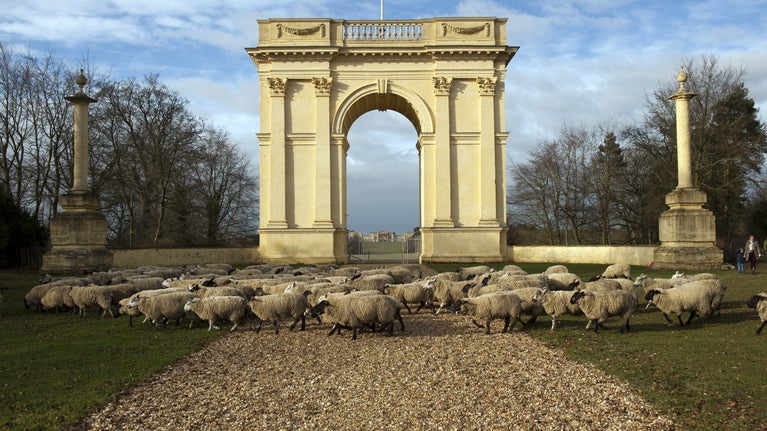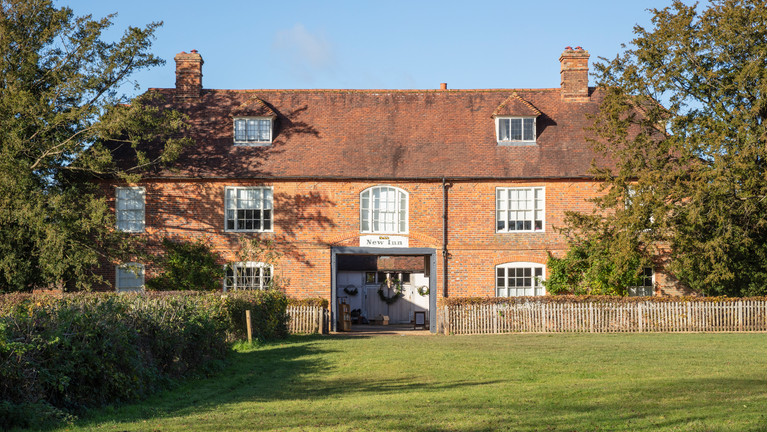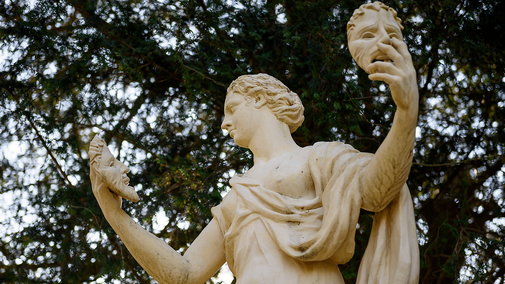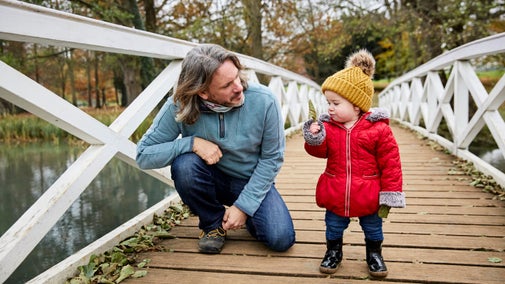
Discover more at Stowe
Find out when Stowe is open, how to get here, the things to see and do and more.

Stowe, one of the most remarkable legacies of Georgian Britain, was owned by the Temple-Grenville family for over 300 years. In the 18th century, they transformed Stowe into their principal seat and employed leading gardeners, architects and designers to create what is today the largest, grandest and most important Landscape Garden in England. Stowe charts the entire development of the landscape movement, from the formal Baroque to the natural landscape style.
There has been a settlement at Stowe for over a thousand years. In 1086, Stowe is recorded as having 3 small holders in Domesday Book. All that remains of Stowe village is the medieval Parish Church, located at the heart of the garden close to the Elysian Fields.
The Temple family were Warwickshire sheep farmers. In 1571 Peter Temple (1516–77/8) leased Stowe and in 1589 John Temple (1542–1603) purchased Stowe Manor and estate. In 1609, Sir Peter Temple, 2nd Baronet (c.1592–1653) purchased a knighthood from James I. His second wife, Christian Leveson (1612–55), brought a dowry of £3,000 (£336,000 today) some of this came from shares in the Virginia Company.
Sir Richard Temple, 3rd Baronet (1634–1697) inherited Stowe in 1653 and in the 1660s built a new mansion. Designed by William Cleare, it forms the core of the current Stowe House. In the 1670s, Sir Richard was appointed to the lucrative post of Commissioner for the Council of Foreign Plantations.
General Sir Richard Temple, 1st Viscount Cobham (1669–1749) inherited Stowe in 1697. He had a successful military career and was a prominent Whig politician. In 1715 he married Anne Halsey, a beer-heiress who brought a dowry of £20,000 (over £2,200,000 today).
From 1713 Stowe house and gardens were redesigned and enlarged. Royal gardener Charles Bridgeman laid out the new gardens and in the 1720’s architect Sir John Vanbrugh designed several temples. Architect James Gibbs designed further temples between the 1720’s and 1740’s. From c.1730, the garden was expanded by William Kent who designed the Elysian Fields with its new naturalised style.
In the 1740s, Head Gardener, Lancelot ‘Capability’ Brown pioneered the English Landscape Garden style, introducing grassy vistas, serpentine bodies of water and informal planting schemes. The Grecian Valley, begun in 1746, was his first major landscape work, requiring the mammoth task of digging out 24,000 cubic metres of soil. The naturalistic style Brown developed at Stowe would become hugely popular in England and Europe and would make Brown a leading figure in the history of British landscape design.

Under Lord Cobham, Stowe became a political centre and home to the ‘Whig Opposition’. Cobham had fallen out with Prime Minister Robert Walpole and gathered a group of supporters – ‘Cobham’s Cubs’ – that opposed his policies. Members of this political faction met at Stowe and included peers and politicians.
The design and iconography of Stowe gardens and its monuments could be read as a manifesto reflecting Whig philosophy and embodying values of constitutional government, civil liberty and national pride. Members of the family held key political posts, and the wider family produced four Prime Ministers in the 18th century.

From the early 18th century, Stowe was an important tourist attraction and considered essential to any Grand Tour of England. Lord Cobham built the New Inn in 1717 to welcome and accommodate tourists. Guidebooks to Stowe were produced from 1744 and were used to explain the symbolism of the garden to visitors. The first guidebook proclaimed the gardens were ‘…the finest in this Kingdom, and perhaps in Europe...’.
Throughout the 18th century Stowe attracted international visitors including foreign royalty and dignitaries. Stowe inspired garden design with the English Landscape style replicated in gardens across Europe and America.
Viscount Cobham was succeeded by his nephew Richard Grenville-Temple, 2nd Earl Temple (1711–79). On his mother’s death in 1752 he inherited Stowe, the Cobham titles and fortune. He also united the Temple and Grenville families.
Under Earl Temple, Stowe gardens were increasingly naturalised, several monuments were relocated, the triumphant Corinthian Arch constructed, and the grand Buckingham Avenue completed.
George Nugent-Temple-Grenville, 1st Marquess of Buckingham (1753–1813), inherited Stowe from his uncle in 1779. Under his ownership, Stowe reached its height for luxury and entertainment.
At its peak, Stowe had over 300 acres of designed landscape garden with wooded valleys, lakes, pasture and open lawns which were adorned with approximately 40 temples and 100 sculptures. Surrounded by a vast parkland dotted with monuments and rides. The estate extended to 10,000 acres and joined three counties. For many years, Stowe was a dominant force in the life and development of the nearby town of Buckingham.

Richard Temple-Nugent-Brydges-Chandos-Grenville, 1st Duke of Buckingham & Chandos (1776–1839) inherited the extensive Temple-Grenville estates in 1813. In 1796 he had married heiress Anna Eliza, Baroness Kinloss (1779–1836). In 1813 she inherited the Hope Estate, a sugar plantation in Jamaica, which in turn, was passed to their son on his marriage in 1819.
The 1st Duke had a lavish lifestyle and, despite his vast wealth, was heavily in debt. In 1827, he purchased a Yacht to sail around the Mediterranean, fleeing his debtors and closed Stowe.
Following the abolition of slavery in British colonies in 1834, the future 2nd Duke received a compensation award of £6,630 5s. 6d. for the 379 enslaved people of the Hope Plantation in Jamaica.
In 1839 Richard Plantagenet Temple-Nugent-Brydges-Chandos-Grenville, 2nd Duke of Buckingham & Chandos (1797–1861) inherited Stowe. Despite the family’s financial issues, he spent lavishly, including relocating several garden monuments and refurbishing Stowe House to host Queen Victoria and Prince Albert in 1845.
Described as the ‘greatest debtor in the world’ the 2nd Duke was declared bankrupt with debts of around £1,500,000 (over 120,000,000 today). By 1848, bailiffs seized Stowe Estate, and his creditors insisted the contents of Stowe House be sold. The 40-day auction raised only around £75,500.
Richard Plantagenet Campbell Temple-Nugent-Brydges-Chandos-Grenville, 3rd Duke of Buckingham & Chandos (1823–89) inherited Stowe in 1861. He held various political offices, including Governor of Madras from 1875–81 and aspired to recover the family fortunes. Stowe House and around 10,000 acres were saved and he reopened Stowe to the public from 1862.
Lady Mary Morgan-Grenville, Baroness Kinloss (1852–1954) inherited Stowe from her father in 1889. Between 1889–94 Stowe was let to the Comte de Paris, a claimant to the French throne. Richard George Morgan-Grenville (1887–1914) inherited Stowe in 1908 but was killed in action in the First World War. His brother, the Reverand Morgan-Grenville (1889–1944) sold the remaining estate in 1921.

Property developer Harry Shaw purchased Stowe House and gardens with the aim of presenting Stowe to the nation. Shaw was unable to fund a suitable endowment and in 1922 sold the house and garden to a committee formed to create a new public school. Stowe School opened in 1923, saving the house from demolition and the gardens from destruction. In 1989 Stowe School gifted the surviving gardens and monuments to the National Trust.
Since 1989, the National Trust has undertaken an extensive program of restoration to the gardens. This has included the conservation of buildings and landscape elements, the reintroduction of statuary and other lost features, and the restoration of historic planting and views.

Find out when Stowe is open, how to get here, the things to see and do and more.
Discover the stories behind the paths of vice, virtue and liberty that run throughout Stowe Gardens and the individual beauty and significance of each area.

At the heart of Stowe's garden is Stowe House, which is not owned by the National Trust. Discover how you can visit for refreshments and tours at certain times.

Take the kids on an outdoor adventure this season as you explore a world of lakes, magical woods, enormous temples, colourful reflections and twisted trees.

Read our report on colonialism and historic slavery in the places and collections we care for and discover how we’re changing the way we approach these issues.

Find out how the buildings, monuments and statues located throughout the garden and parkland at Stowe contain much significance in their positioning and the stories they tell.

Discover more about the conservation work carried out since the National Trust was gifted Stowe in 1989 and explore our plans for the future.

Learn about people from the past, discover remarkable works of art and brush up on your knowledge of architecture and gardens.

From landscape gardeners to LGBTQ+ campaigners and suffragettes to famous writers, many people have had their impact on the places we care for. Discover their stories and the lasting legacies they’ve left behind.
